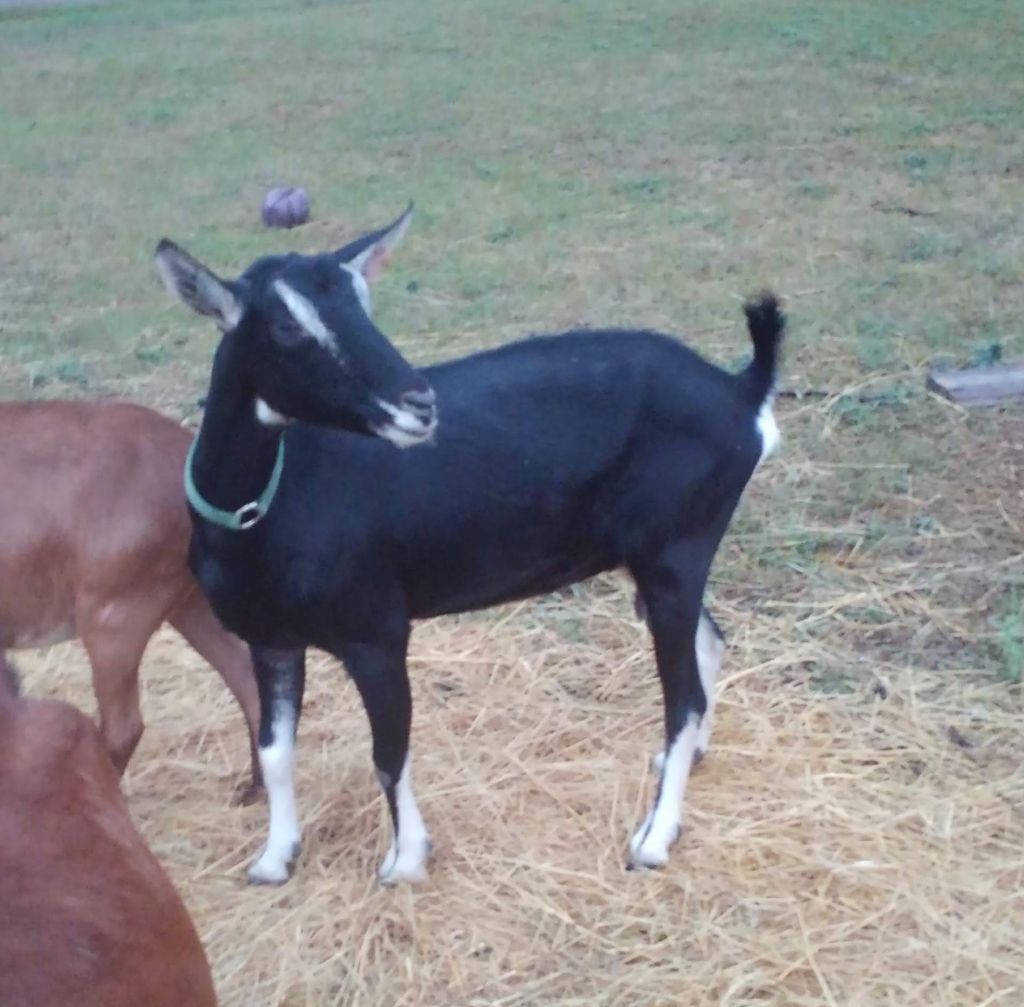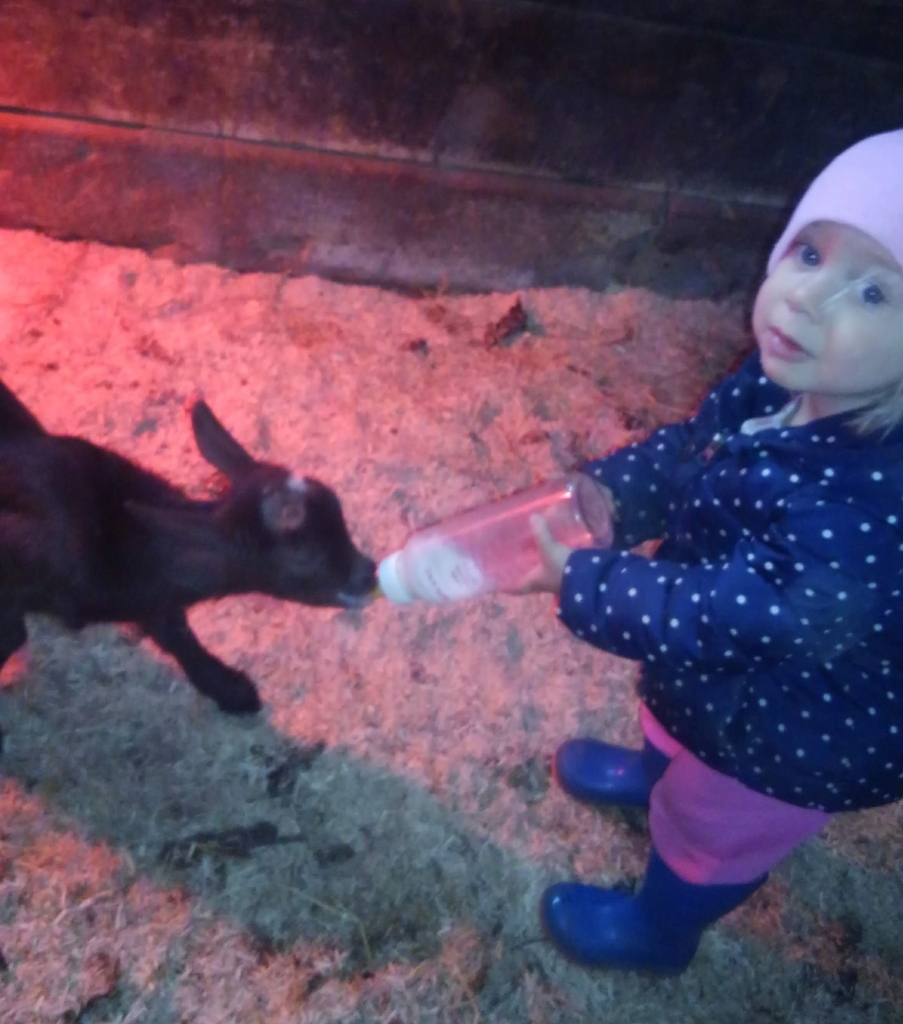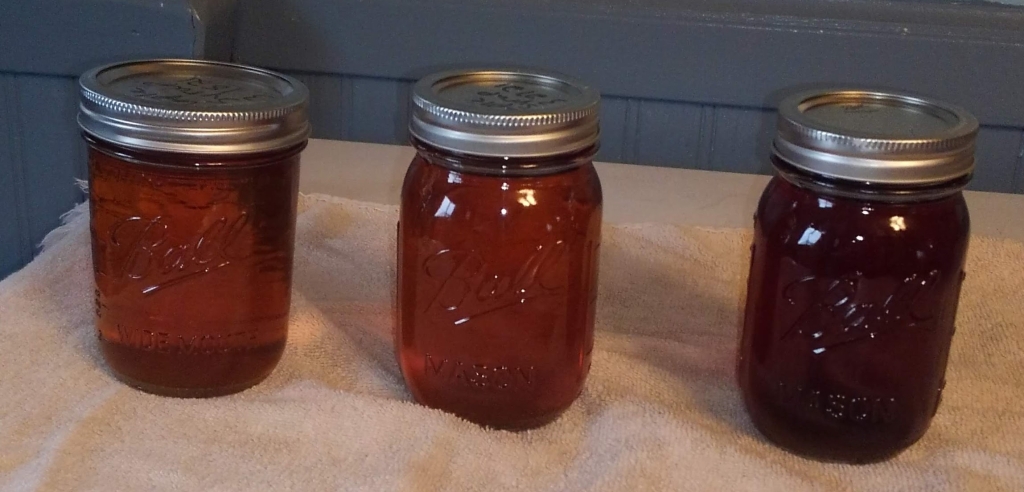It has been some time since my last post and all I can say is that teaching full time is a huge draw on my time and brain power, but I am taking a little time tonight to work on a farm update.

It is finally getting warmer in the north woods. There are more days were the sun was shining, the temperature ranges close to 50 F, and the wind has been blowing most days. I wish I could sit in the sun with a good book but spring days are busy days and I have been enjoying the nice weather in other ways.
Maple Syrup
One of our accomplishments this spring was boiling sap into maple syrup. For about 3-4 weeks in the spring we tap the maple trees on our property and collect the sap. This year we tapped 22 trees and have currently harvested 120 gallons of sap. We have a system where we collect sap during the week and spend Friday and Saturday cooking it down into syrup. We usually complete 3 cook downs before we are ready to be done for the season.
Our sap boiler is basically a square woodstove with a holding tray for a large stainless steel pan that holds 35 gallons and has a spigot welded into it. There is a blower fan built into the woodstove door which keeps the fire hot but also means we have to put wood into it every half hour or so. As the sap reduces we add more to cook off what we had collected for the week which during our second week was roughly 65 gallons. After the sap cooked all day we filled the woodstove and shut off the blower fan so it could simmer through the night. In the morning we added more wood to get the fire back up and cooked it for a few more hours. Then we emptied the pan and brought the almost syrup in to finish it on the stove. With the use of a hydrometer we were able to cook it down to almost 2 gallons of maple syrup.
This year we experimented a little with making cinnamon flavored syrup. It tastes amazing! After funneling hot maple syrup into a jar we added a cinnamon stick to it, closed up the jar, and let it sit for awhile. That’s it, super simple and soooo tasty.
Goats

Our goat herd has fluctuated a bit over the last year. In June we bought a new goat from a large dairy and Fiona, my daughter, named her Lazy Daisy. We bred her to one of Nora’s last kids in the fall along with Britney who is a two year old Nubian/Alpine/Oberhasli cross. Lazy Daisy had triplets on the last day of March. She had two does and one buck and they look exactly like her and are extremely hard to tell apart. Since she had come from a large dairy where the milking goats start milking right away and the kids are bottle fed separate from their mothers we weren’t sure how well she would care for her kids but she is doing wonderfully. She is turning out to be a great mother and I haven’t had to help her with her triplets at all besides putting out a heat lamp for them as it is cold in our area.
Britney had two bucks a week later on a cold, cold day. We put out a heat lamp for her right away and tried to get each kid to suckle. They each struggled but I thought after a while under the heat lamp they would perk up. An hour or so later I brought a bottle with me and milked Britney a little in a bottle to get a little nutrients into them. Britney did really well for never having been milked before and she tried to stay very still when her babies were trying to drink from her.

The first few days were a struggle. Before and after school I tried to get each to drink from Britney if that failed I had them drink from a bottle. A few times I had to bring one into the house to warm up and bottle feed but they are finally doing well on their own. I also had to milk Britney twice because she was making more milk than the two little ones could drink and she was getting overfull and a bit sore.
I think she is turning out to be a pretty good mama. Even though her kids struggled more it was mostly because she had never had kids before and didn’t quite know what to do with them. She kept looking at them and me like she wasn’t sure exactly where they came from and what to do with them. I can relate because I felt the same way when I had my first baby.
Poultry
Trenton built a beautiful new moveable coop for the chickens last fall and they spent a few months in it moving around the pasture. Unfortunately, shortly after we put all the chickens in it we realized we had too many chickens for that sized coop. In November we moved them back into the built in coop in our barn. Today Lucian started cleaning the new coop out so we can put the ducks in it. The ducks have a small coop and run by the barn. There are only two of them so they do not need a ton of space but we haven’t found a good way to clean out their yard yet so they need to move for a while. Their yard is mucky and full of a winter’s worth of duck poop. Their shelter is clean but their yard is filthy so it will be better for them to be moved elsewhere until we can come up with a new plan for them.
Horses
This last fall we lost our Haflinger pony Melody. Our remaining horse, Jack, took it very hard and was depressed for months. He spent most of his time standing in his pasture looking sad and lost. A friend of ours mentioned that they were thinking of selling their Welsh Cross pony, Blaze, because her kids had outgrown him. I thought it wouldn’t hurt to take a look and see what we thought about him. After looking him over and taking him for a ride we decided to go ahead and buy him for a few different reasons.
- Jack needed a friend because he was not doing well on his own.
- A smaller sized horse would be more comfortable for the kids to learn how to ride.
- He was trained to both ride and drive and has been a kid’s horse his entire life.
- We had enough hay for two horses for the winter.
Jack is not as fond of Blaze as he was of Melody but he is appreciative of the company. He is a nice pony who has taken the kids on a quite a few lead “rides” this winter. His only drawback is that he is hard to catch. It will occasionally take about 20 minutes to catch him but other than that he is working out nicely. It’s about time for me to start working the horses this spring and I am really looking forward to it.
One difficulty over the winter has been that our tractor is not working and to fix it is going to be a big undertaking. This makes it very difficult to put 900 pound round bales out into the horse pasture. Usually we end up tying a strap around one and dragging it into their pen with our truck. It works but it is definitely a pain.
Garden and Orchard
Lucian spent most of the winter chopping small trees out of our future orchard site and it is starting to clear out nicely. Trenton will be going in their soon with the chainsaw to cut the wood into firewood sized chunks. We are also planning to invest in woven goat fencing this year to fence in the orchard space so we can set the goats to clearing it out completely.
The garden is only in the planning phase and is still a distant thought. We did not get around to planting starters this year but we are going to cut out a few kinds of plants that don’t flourish in our soil so we won’t be purchasing as many greenhouse plants anyway.


























